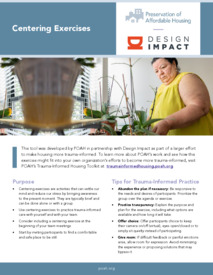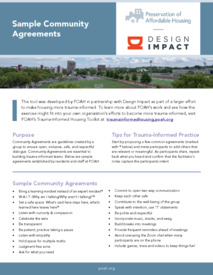Get to know one another! Identify what your team has in common, including your shared goals. But don’t stop there, integrate community building into your entire process.
Why It’s Important:
Trauma is deeply personal; healing and resilience are deeply communal. Create trusting relationships to allow space for honesty and transparency.
What We Learned:
- Invest time in building relationships and developing norms, like community agreements or centering practices.
- Slow down. This work involves real people with real lives. At POAH, when staff and residents told us they were burnt out and dealing with real issues we listened, slowed down and extended grace. In return teams felt more comfortable making mistakes and embracing conflict.
- Focus on learning throughout the process. We prioritized changing mindsets, actions and conditions, as opposed to just creating solutions. When we prioritize solutions, we can miss opportunities to understand root causes.
- Give room to heal. We accounted for and responded to our teams when they experienced firsthand and secondary trauma. Deciding to become trauma-informed does not eliminate trauma. In many ways, it increases one’s awareness or the pervasiveness and impact of trauma on themselves and those around them.




